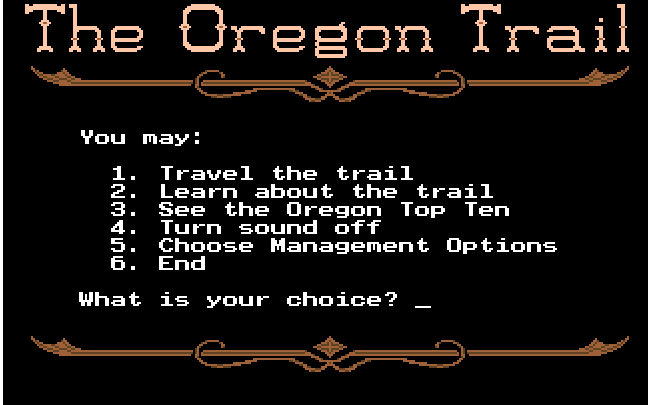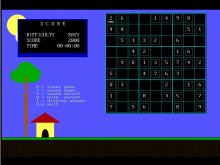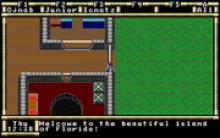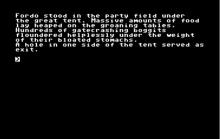The Oregon Trail
How to play The Oregon Trail
Press Enter Key to start or stop walking Use Arrow keys to point the rifle (novice hunters) Press Space bar to fire the rifle. Control-A also allows you to erase messages (epitaphs) written on the tombstones for "emigrants" who died along the trail.
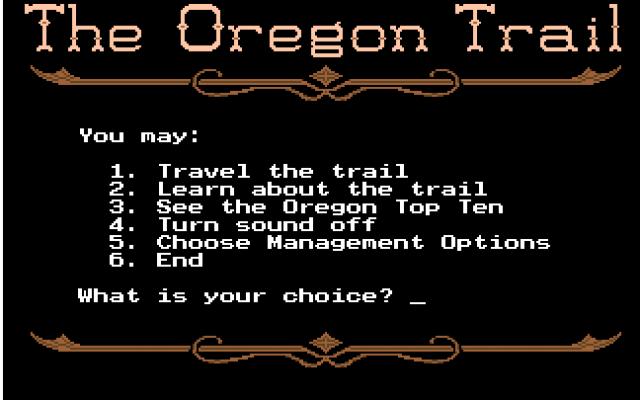
The Oregon Trail - additional information

Oregon Trail: A Pioneering Adventure in Gaming
Oregon Trail stands as a monument in the landscape of educational video games, merging historical learning with engaging gameplay. Initially created in the 1970s, it has educated and entertained generations, allowing players to experience the trials and tribulations of 19th-century pioneers on their journey westward across North America. This article delves into the rich history, gameplay mechanics, and enduring legacy of Oregon Trail, offering insights into why it remains a beloved classic.
The Historical Journey Behind Oregon Trail
Oregon Trail was developed with the intention of teaching schoolchildren about the life of pioneers during the 1840s to 1860s, a period marked by mass migration along the Oregon Trail. The game's educational foundation is solid, rooted in historical events and challenges faced by travelers. Players must navigate their party through harsh conditions, manage resources, and make critical decisions, mirroring the real-life decisions of the pioneers.
Gameplay Mechanics: A Test of Strategy and Survival
At the heart of Oregon Trail's gameplay is resource management and decision-making. Players start by choosing their profession, which affects their starting resources, and then embark on the journey from Independence, Missouri, to Oregon's Willamette Valley. Along the way, they hunt for food, manage health conditions, cross rivers, and face unexpected events, such as wagon breakdowns and disease outbreaks. The game's unpredictable nature and the need for strategic planning make each playthrough a unique challenge.
The Cultural Impact of Oregon Trail
Oregon Trail's influence extends beyond the classroom, embedding itself in popular culture. Its references in television, literature, and internet memes attest to its widespread recognition and nostalgic value. The game not only introduced many to the concept of educational gaming but also sparked a lifelong interest in history for countless individuals. Its legacy is evident in the fond memories shared by those who navigated the perilous journey to Oregon City.
Educational Value and Modern Relevance
Despite its age, Oregon Trail remains an effective educational tool, offering insights into American history, geography, and the pioneer spirit. Its ability to blend learning with fun is a testament to the potential of video games as a medium for education. Modern iterations and remakes continue to introduce the game to new generations, ensuring its lessons and experiences are not forgotten.
Exploring Similar Games for History Enthusiasts
For those captivated by the blend of history and gameplay in Oregon Trail, there are several similar games worth exploring:
Carmen Sandiego Series: Offers a globe-trotting adventure that educates players on geography and history.
SimCity: While not historical, it teaches about urban planning and management.
Civilization: Players can guide a nation through history, making decisions that influence its development.
Age of Empires Series: Focuses on historical empires and military strategy, offering a hands-on lesson in ancient and medieval history.
The Enduring Legacy of Oregon Trail
Oregon Trail's journey from a simple educational game to a cultural icon is a remarkable story. It proves that video games can be powerful teaching tools, offering both fun and learning in equal measure. As we look back on the trail blazed by this pioneering game, we're reminded of the countless virtual wagons that set off, seeking the promise of the Oregon territory. For many, Oregon Trail was more than just a game; it was an unforgettable adventure through history, teaching valuable lessons about perseverance, decision-making, and the indomitable human spirit.
As Oregon Trail continues to be celebrated and remade for new audiences, its legacy as a cornerstone of educational gaming is secure. Its blend of historical accuracy, engaging gameplay, and educational value makes it a timeless classic, cherished by gamers and historians alike. Whether you're a veteran trailblazer or a curious newcomer, Oregon Trail offers an adventure that is as educational as it is thrilling, proving that sometimes, looking back is the best way to move forward.






